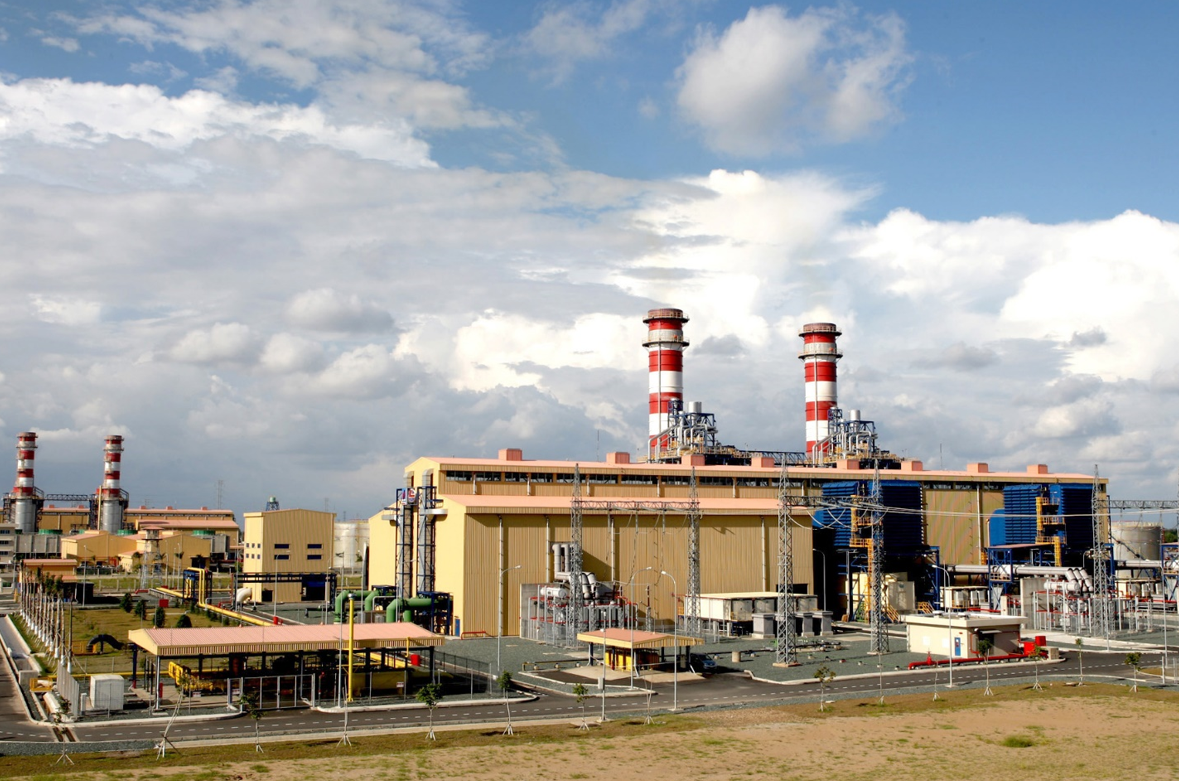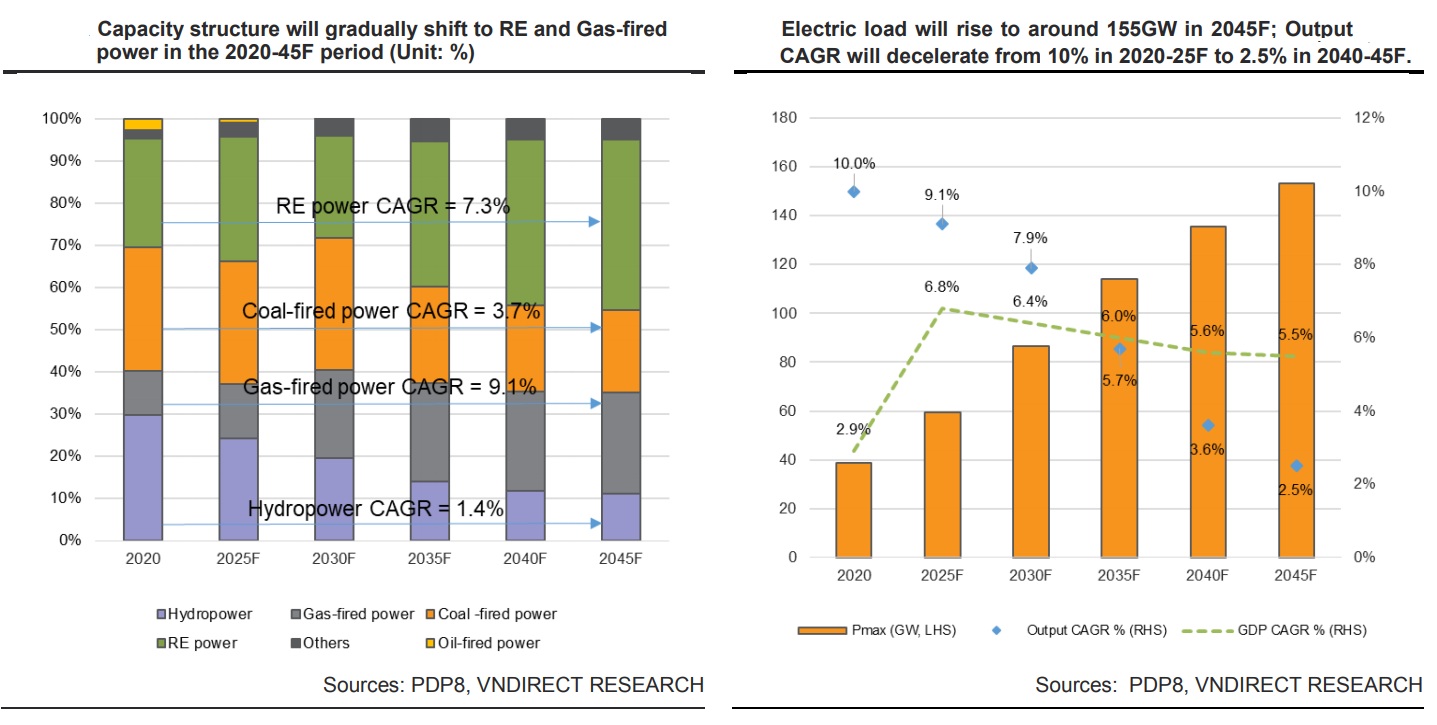Vietnam power snapshot: Gear up energy sustainability
The Ministry of Industry and Trade has released the final draft of the National Power Development Plan 8 (PDP8). What can we expect from this draft plan?

Gas-fired power is expected to be empowered with the highest growth rate of 9.1% CAGR over 2020-45F, accounting for 24% of country capacity by 2045F.
Looking forward to a greener future
According to the draft, country installed capacity will probably reach about 261,951 MW by 2045F, meanwhile, total output from domestic and import sources might reach 528.8bn kWh by 2030F. VNDirect said that there would be 3 issues that should be highlighted from the draft PDP 8.
First, it reinforces the government’s current view on prioritizing renewable energy sources to minimize negative impacts caused by electricity production on the environment. Renewable energy (RE) is targeted to grow 7.3% CAGR over 2020-45F, widening its weight to 41% of country capacity by 2045F from 25.8% in 2020. In which, wind power will rise 19% CAGR in 2020-2045F period and take over 18.6% of total capacity in 2045F. On the other hand, solar power capacity will decelerate to 4.6% CAGR over 2020-45F and its proportion declines from 24% in 2020 to 19.9% of total capacity in 2045F.
Second, gas-fired power will be empowered with the highest growth rate of 9.1% CAGR over 2020-45F, accounting for 24% of country capacity by 2045F. According to the PDP8, the gas-fired power plant will shift from natural gas-to-power to LNG-to-power from 2025F as domestic natural gas resources are being exhausted while new gas fields require complex exploiting conditions with higher gas prices. Hence, imported LNG is an inevitable and more stable substitution regarding the sharp rise in gas-fired power plants in the following years.
Third, hydropower remained no spaces to grow, only inches up 1.4% CAGR in 2020-45F, and its capacity weight will narrow down from 29.9% in 2020 to 11% in 2045F. Coal-fired power will remain its essential role in 2021-30F, grabbing 31% of total capacity in 2030F. However, it will be gradually replaced due to environmental effects when Vietnam's electricity provides sufficient power for the systems. Hence, its capacity will reduce 20% of total capacity in 2045F, with 3.7% CAGR in 2020-45F.

Developing power transmission grid
According to PDP8, commercial electricity in the North will gradually increase from 42.4% in 2020 to 45.8% of total national electricity in 2045F. In comparison, the South will reduce its proportion from 47.4% in 2020 to 43.6% in 2045F. Notably, in 2040 the commercial electricity of the North will begin to exceed the South. Besides, the maximum load in the North will always be higher than in the South, according to the PDP8. Hence, VNDirect said there would be a difference in transmission trends among regions in 2025F. Whereby, the northern provinces will receive about 10bn kWh, of which 4bn kWh come from the Central and Highland, and 6bn kWh from the South.
Moreover, the explosion of RE power capacity in the South and Highland will gradually enhance the transmission direction from South to North due to overcapacity. Therefore, in VNDirect’s views, it is necessary to expand and upgrade the inter-regional transmission system of South Central – Middle Central – North Central – North to reduce pressure for the power system.
According to EVNNPT’s development plan for transmission grids, Vietnam will have about 617 transmission lines and substations energized in 2020-25F, including 116 500kV projects and 501 220kV projects. From 2035, MOIT plans to continually build 252 substations 500-200kV with a total additional capacity of 164GVA. Besides, the total length of transmission lines for new construction and renovation reaches 11,200km/315 projects. The new transmission grids play a vital role in providing sufficient electricity for the locality, especially the 220kV stations.








